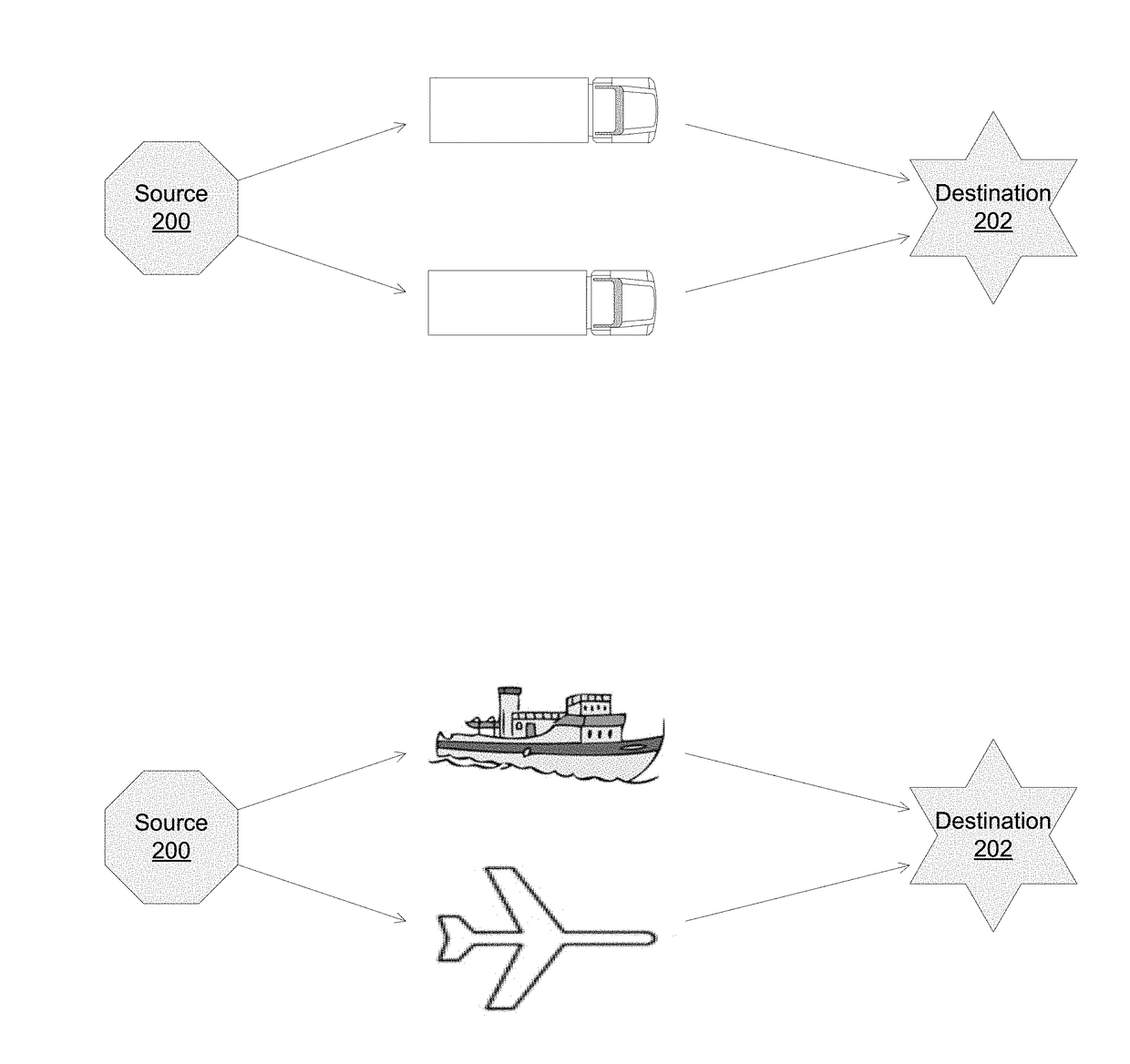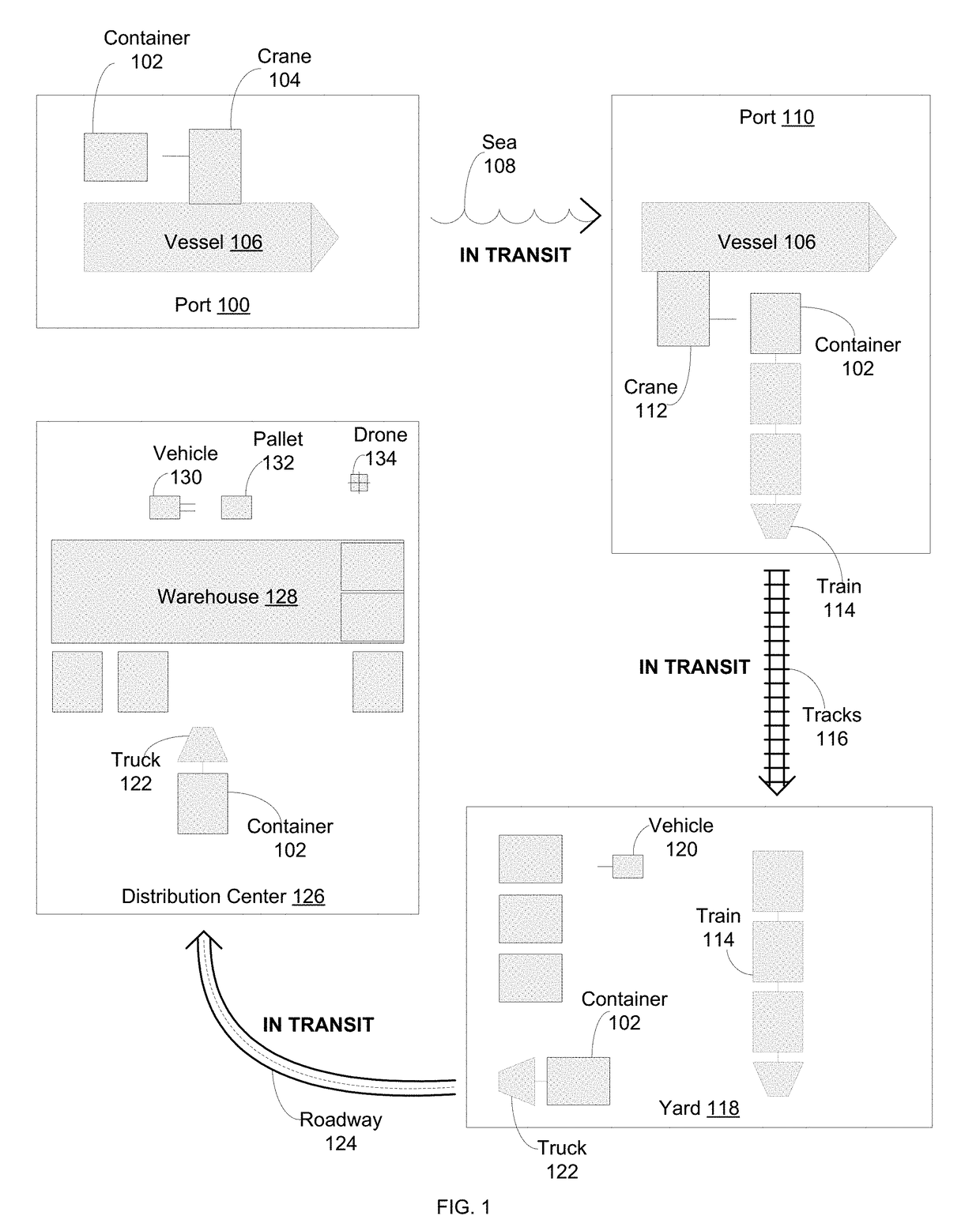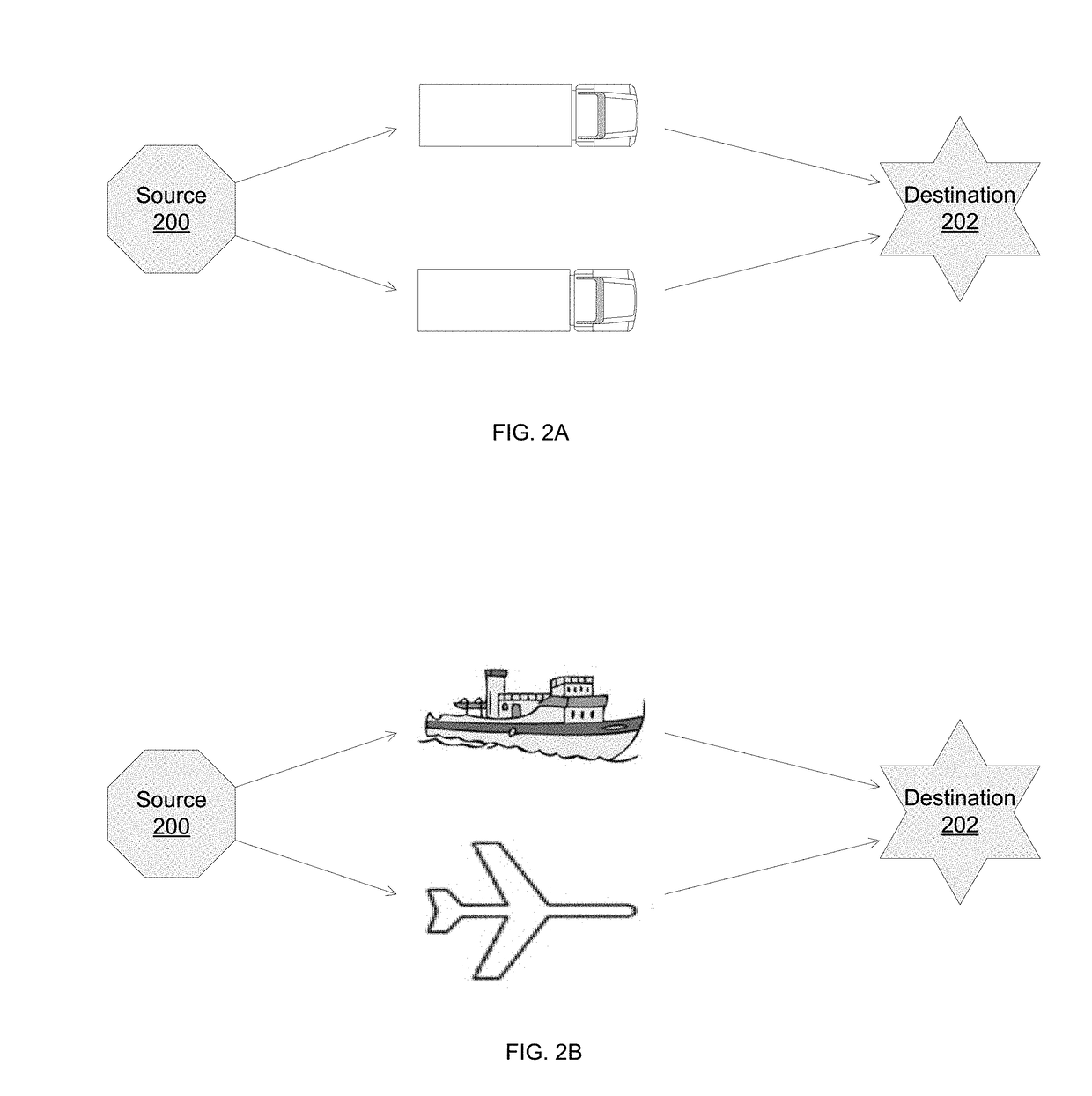Autonomous supply and distribution chain
a technology of autonomous applied in the direction of navigation instruments, instruments, marketing, etc., can solve the problems of inability to determine the vehicle, substantial delays and inefficiencies, and achieve the effect of optimizing the operation of logistics, maximizing the efficiency of supply and distribution chain, and increasing performan
- Summary
- Abstract
- Description
- Claims
- Application Information
AI Technical Summary
Benefits of technology
Problems solved by technology
Method used
Image
Examples
Embodiment Construction
[0031]Disclosed are systems and methods for autonomous optimization of supply and distribution chain transit operations, including management of the movement of inventory through the chain. Although the present embodiments have been described with reference to specific example embodiments, it will be evident that various modifications and changes may be made to these embodiments without departing from the broader spirit and scope of the various embodiments. In addition, the components shown in the figures, their connections, couples, and relationships, and their functions, are meant to be exemplary only, and are not meant to limit the embodiments described herein.
[0032]FIG. 1 is a schematic diagram of an example supply and distribution chain. Products and goods may be produced at a manufacturing plant and transported to a first port 110. The first port 110 may comprise a shipping container 102 that is loaded by a first crane 104 onto a vessel 106. The first crane 104 may be an auton...
PUM
 Login to View More
Login to View More Abstract
Description
Claims
Application Information
 Login to View More
Login to View More - R&D
- Intellectual Property
- Life Sciences
- Materials
- Tech Scout
- Unparalleled Data Quality
- Higher Quality Content
- 60% Fewer Hallucinations
Browse by: Latest US Patents, China's latest patents, Technical Efficacy Thesaurus, Application Domain, Technology Topic, Popular Technical Reports.
© 2025 PatSnap. All rights reserved.Legal|Privacy policy|Modern Slavery Act Transparency Statement|Sitemap|About US| Contact US: help@patsnap.com



